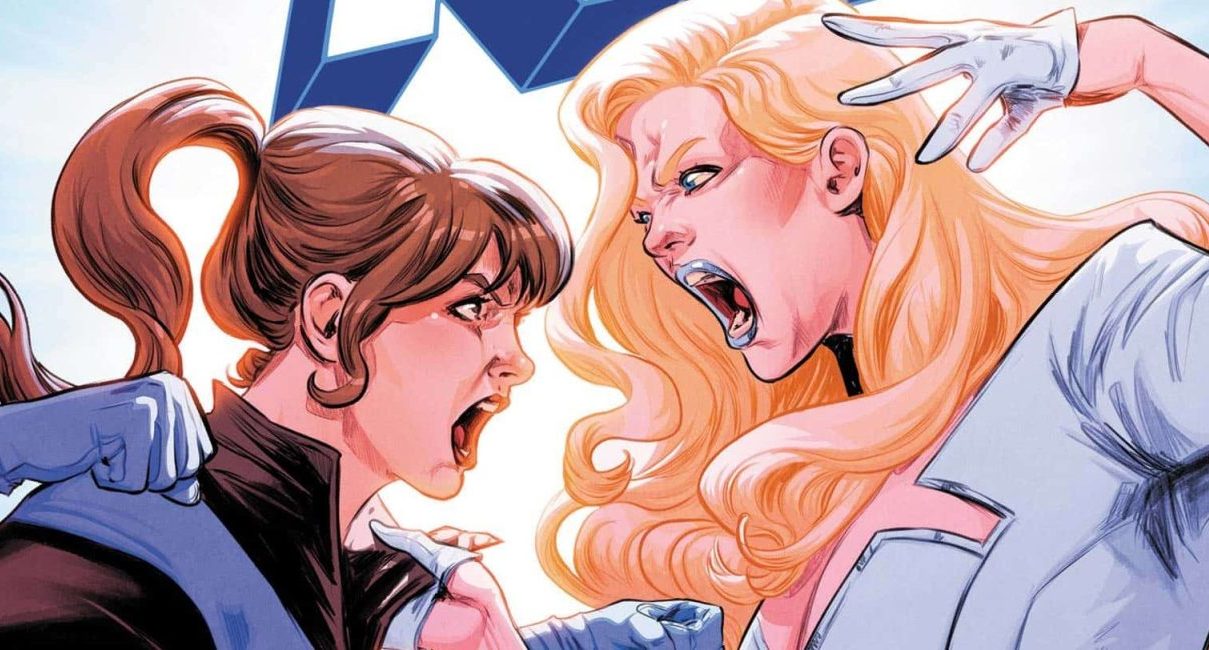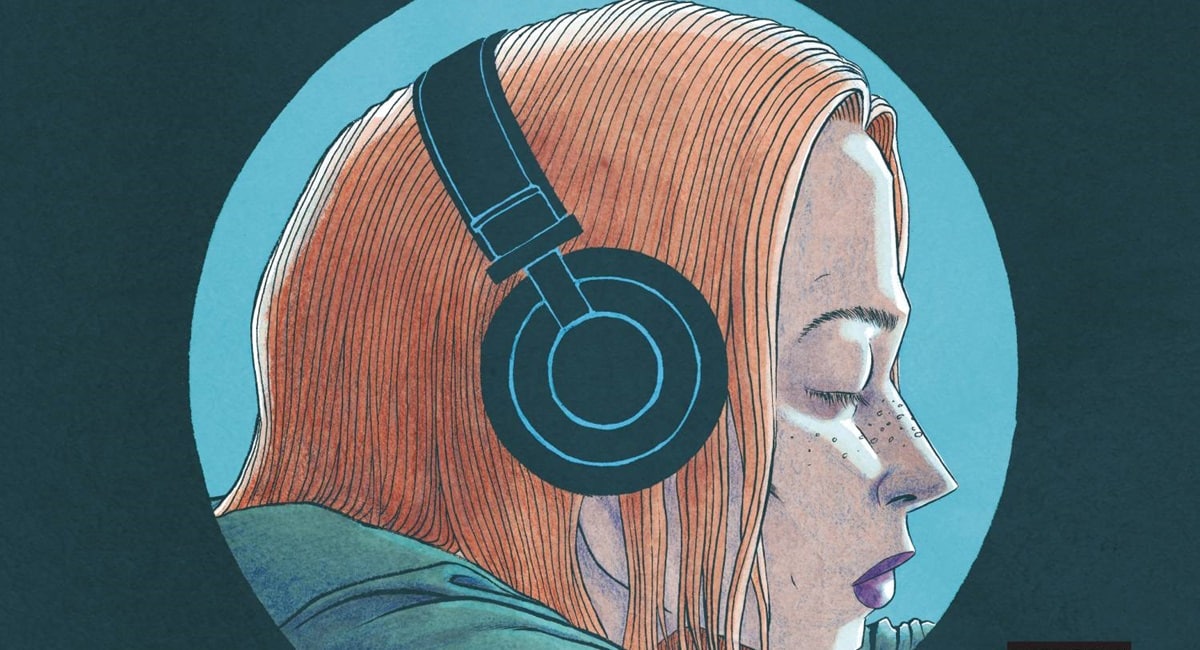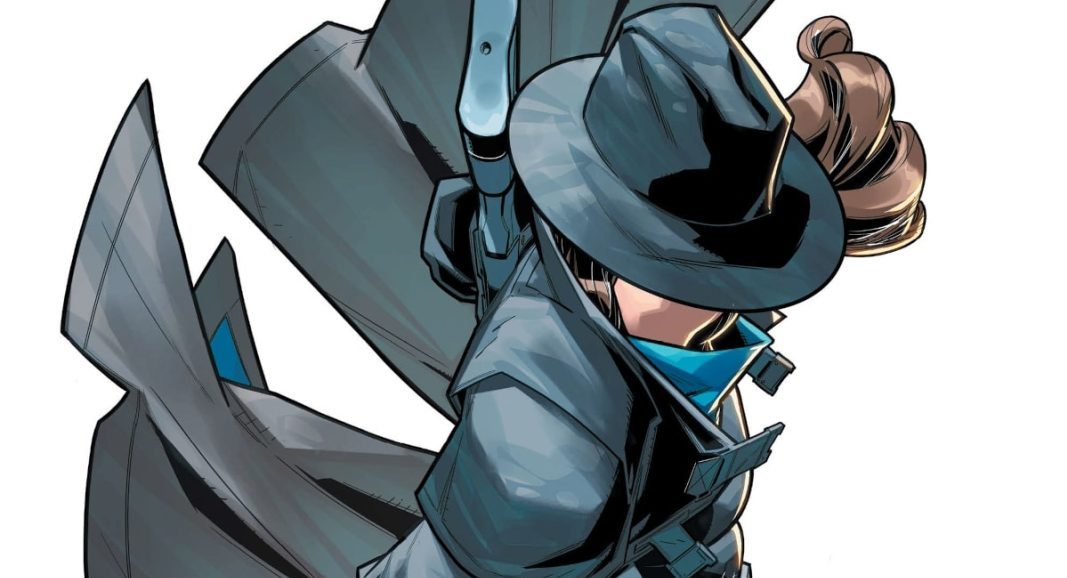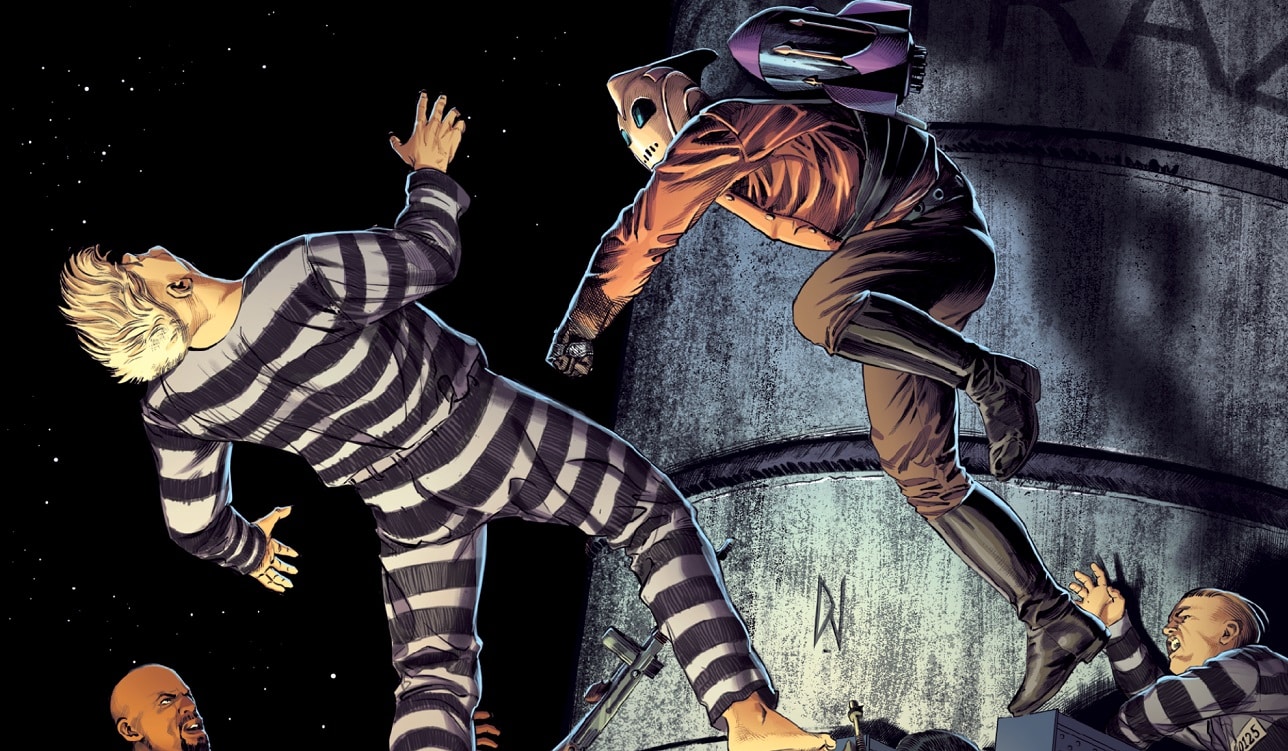Bob Levin | November 20, 2024
Note: Prior to submitting this article, Bob Levin was unaware of the accusations of improper sexual behavior brought against Brandon Graham in 2018. After careful discussion, Levin and the editors agreed to allow the article to run as is. – the editors
"A strip is a trip, almost of a shamanic nature, truth be told." – Damir Stojnic
In 1961, Walker Percy published The Moviegoer, which came to mean a lot to many people, including me. “The search,” Jack “Binx” Bolling, the novel’s narrator, informed, “is what anyone would undertake if he were not sunk in the everydayness of his life. ... To be aware of the possibility of the search is to be onto something. Not to be onto something is to be in despair.” In 1961, to be coming out of teenage years spent in the 1950s, which, if they were anything, were perennial “everydayness,” interrupted by the occasional Little Richard song, was a steady contest against despair.
Now 82, five heart surgeries beneath my belt – or, more precisely, my sternum – and a sixth under discussion, I still – or, perhaps because of – can look back in good humor at many abandoned quests. Guitar lessons. JV baseball. Criminal defense law. A la recherce du temps perdu. The only marathon I attempted. Philadelphia where I’d been born and raised. But I had pursued one with success. My search for Adele had required overcoming a separation of four years and 3000 miles. The resulting 56-years togetherness, as far as either of us is concerned, makes parted seas and burning bushes look like cancelled bus transfers.
I have told this story many times in many forms. Pieces of it run through my mind daily, laying their thumb on what I say or write or think. I can resist repeating it now, knowing it is there to draw from.
And I retain interest in searches and what others make of them.

I
Moonray was written by Brandon Graham, a 47-year-old Seattle native, whose comics career has ranged from porn to the mainstream. The art is his and Xurxo G. Peralta’s, a Spaniard, educated at the Universidad de Vigo and Minneapolis College of Art and Design. Their book is based on characters created by Rodrigo Etcheto, another Washingtonian, a student of Stoic and Epicurean philosophy, who, according to his Amazon bio, is “obsessed with the flow of time and themes of change, impermanence, life death & rebirth, and tranquility (sic).”
This cross-pollination has produced a two-volume search, set tens of thousands of years in the future, through caves and pits and smoke and across dunes and desert and rocks and stretches of terrain reduced to ash by war. These lands are roamed by flesh-eating, horse-like creatures, poisonous rockroot grubs, and one-winged carrion feeders. While the nature of the world and life upon it has stretched the limits of the Graham/Peralta/Etcheto imagination, the story it tells does not extend much beyond Homer. (It also seems short on Stoics.)
 A ” “hero,” a blank-faced, spiny-backed humanoid form, has emerged from “mium,” a substance that contains “the entirety of a being, body and soul” which, even after death “retains all ... that being was,” allowing it to be “remolded back into life,” is summoned by an airborne, blinking-light-manifested “crystalline thought-form” to join “a quest to save our most sacred goddess,” Iltar, the Goddess of Creation, who is a prisoner of The Hive, a murderous religious cult. (There are at least three other gods in this future: a Rock God of Patience; a God of Blood and Heat; and a Goddess of Art and Water, so placing Iltar’s fate in the hands of a newbie flesh-blob and Tinker Bell struck me as saying little for their powers. That other gods’ corpses litter the landscape like rusted out DeSotos also made me wonder about the power and extent of this divinity.) Blob and Bell are joined by a flying sword/woman and a “malformed heathen” of great strength; but all but the hero appear to have vanished by the volume’s end.
A ” “hero,” a blank-faced, spiny-backed humanoid form, has emerged from “mium,” a substance that contains “the entirety of a being, body and soul” which, even after death “retains all ... that being was,” allowing it to be “remolded back into life,” is summoned by an airborne, blinking-light-manifested “crystalline thought-form” to join “a quest to save our most sacred goddess,” Iltar, the Goddess of Creation, who is a prisoner of The Hive, a murderous religious cult. (There are at least three other gods in this future: a Rock God of Patience; a God of Blood and Heat; and a Goddess of Art and Water, so placing Iltar’s fate in the hands of a newbie flesh-blob and Tinker Bell struck me as saying little for their powers. That other gods’ corpses litter the landscape like rusted out DeSotos also made me wonder about the power and extent of this divinity.) Blob and Bell are joined by a flying sword/woman and a “malformed heathen” of great strength; but all but the hero appear to have vanished by the volume’s end.
I know I can be faulted for being too logical. More than one humanities TA faulted my unwillingness to suspend disbelief. When a friend related how a medium had put him in touch with his dead mother and I took this as an invitation to be skeptical, he stopped speaking to me. My scoffing at Kennedy conspiracy theories has set people at the café turning their backs and walking away.
Science-fiction, on the whole, is not my thing. I felt I had outgrown Ray Bradbury by 9th grade. Philip K. Dick, touted by a fellow in my pick-up basketball game, had his moments with me but did not endure like Tom Waits, to whom I’d been hipped by another. The last work in the genre I’d read, William Hope Hodgson’s The Nightland – incidentally another search for a woman across a future wasteland populated by onocentauri foedissimae – held my interest primarily as a historical curiosity (and an example of atrocious narrative skill). The field rarely offered access to – or expansion of – any here-and-now which engaged me. It felt more like creators trying to deflect themselves from the ground beneath their feet.

In his Introduction to Book Two, the writer-director Sylvain Despretz calls “telling a story with non-human characters” “one of the harshest challenges of the graphic novel enterprise.” He suggests that Moonray’s visuals keep it sufficiently “relatable” to meet this challenge and that its “illustration and graphic strategies” provide additional compensatory “beauty and charm.” Even an aesthetically challenged trog like me recognizes the free-wheeling page design and heavy-on-the-pastels palette are arresting. The land and beasts and interiors are suitably horrific or amusing or awe-inspiring. They uncork a champagne salute to the delights of the graphic arts.
But Moonray’s protagonist’s lack of personality or character or psychological depth left me with no personalized grab bar to steady my passage from start to finish. I could not care about him. Whether or not he rescued Iltar made no difference to me. Any journey carries with it a modicum of suspense, but without an emotional investment in the traveler, interest in the outcome declines. No matter how fearsome the impediment encountered, it can be presumed that, as long as pages remain to be turned, it will be overcome. The inevitability of “over-coming” is a belief whose shelf life has long expired in me. Sofas, as Sam Spade knew, may fall from skies upon one’s head at any moment.
Time was, when the conversation at the next table turned to major illnesses, I moved away. Now ill health is as basic a topic of conversation for me as the Warriors. Not long ago, I phoned a fellow I had known since sixth grade. We had seen Chester High thrash Bartram. We had seen Sonny Banks floor Cassius Clay. He had nicknamed me “Levinski.” Now he lives in a condo in Boca, his mind diminishing. Each time I call I hope to be remembered. “We are headed down the same road, Visk,” he told me. “The only question is when we get there and what delivers us.”
II
Book One of Moonray ends with the hero riding a slug-like creature, across richly verdant land. meduSalem, a different work entirely, begins with a man riding a horse through a dark and dreary wilderness. It contains 62-pages of sequential art, introduced by four-pages of text, two in Croatian and two in English translation, by its artist/author Damir Stojnic. Each introduction runs about 1,000 words. The other pages contain about 100 words total. (Seventeen of the final 18 pages have none.) When words appear, they are uncontained by balloon or caption box but are elements of the composition. Remove most; little is lost.
 Stojnic, who was born in Rijeka, Croatia, in 1972, is a graduate of the Academy of Arts in Zagreb and has exhibited in Austria, Croatia, England, Greece, Hungary, and Italy. He works in acrylic and oil and in fire and amber. This is his first book.
Stojnic, who was born in Rijeka, Croatia, in 1972, is a graduate of the Academy of Arts in Zagreb and has exhibited in Austria, Croatia, England, Greece, Hungary, and Italy. He works in acrylic and oil and in fire and amber. This is his first book.
The time is seemingly medieval; The feel is mythic. A robed, long-haired, long-bearded man rides through forest, across desert and beside a lake. He shelters in an abandoned temple, where a raptor presents him an extra-extra large glowing egg, which he transports to a castle presided over by a half-snake, half-woman, who is protected/attended by a bevy of giant women/snakes. Perhaps the rider and the first snake-woman copulate. Perhaps an attendant cleaves the egg with a scythe. Perhaps an infant emerges. The snake-women and infant vanish from the book. The horse wanders alone. The man, still long-haired and long-bearded, awakens in a modern hotel. “Petrified... everything MiRRoRS!” he proclaims/thinks.
Visually, meduSalem is a symphony, played in blacks, whites and greys. The imagery, for the most part, is recognizable if not of a reality of which any reader is likely to have partaken. The pages, while not in rigid grids, are usually an assemblage of separate “panels.” The process of their rendering is evocatively mysterious, smacking of woodcuts or lithography, but beyond immediate identification. “I use all kind of textures that I paint with black or white ink and than print to the paper,” Stojnic explained. “After that, I try to dig out characters or scenes I need. It's an ideogramic process, actually, like reading from coffee or lamb's liver. I use leaves, pieces of wood, textile samples, surfaces of rotten fruits and vegetables, all kind of garbage I find on my walks thru city or woods. For example, first I paint some piece of wood with black ink and than I press it to the paper. What remains, remains."
What am I to make of this? I think.
In the café in which I ponder, I am part of a regularly assembling cast of North Berkeley’s aging. A bulletin board holds snapshots of customers, past and present. “He’s dead,” people will say, standing before it. “He’s dead.” “She’s gone.” “He doesn’t leave his house.” The Times I spread before me reports on wars and riots and ecological crises. In Goke: Body Snatcher From Hell (1968), a recent offering on TCM, the point is that the aliens who plan to wipe out human life will succeed because we are too busy slaughtering one another to prepare to resist this onslaught. That sounds about right.

In meduSalem, there is clearly a journey, which, Stojnic says, echoing Percy, “despair” gave the bearded man the courage to undertake. But was it a “search”? It is not clear the man had a destination in mind when he set out. The egg provided him a purpose, but it is not clear he expected to receive it. It is unclear, too, if he was ever “onto something.” Nor does the ending’s “petrified” suggest his mission has been beneficial.
From the introduction, which I read only after I had completed the book, I learned the idea for meduSalem had come to Stojnic in a dream, which he had then enriched with other ideas long obsessing him. His view is that man exists within a universe controlled by “an evil Demiurge,” not a benevolent God. An individual can only escape by setting “ablaze” a single atom within his heart, enabling it to pass down the spinal column into the pelvis (aka, “a walk through the desert”), where it can neutralize the stored energy (aka “serpentine fire”) that maintains the delusions which imprison him. This neutralization will activate the pineal gland, restoring one’s true self, enabling actual understanding. This explanation, Stojnic writes, will allow readers to better follow his story, though they may wonder if he “is actually sane.”
Sanity is not a must for me, unless its lack is causing someone to fling debris about the café. (Or, as it appears, it had seized the controls to the frontal lobes of a majority of the Supreme Court.) Certainly its representation on the printed page or gallery walls do not disturb me; indeed, it often increases my interest. And the story, while becoming clearer in one sense, became cloudier in another. The bearded man might be standing in for the single atom but why was he transporting the egg and where in God’s (or Demiurge’s) name was the pineal gland in this telling? And if actual understanding equates to being “petrified,” what is the value to achieving it?

Concededly, the bearded man’s lack of personality/character/psychological depth did not bother me as Moonray’s hero’s did. Perhaps because of meduSalem’s dreamlike nature. Perhaps because it lacks any pretense to delivering a traditional story. Perhaps because it is a journey whose climax is puzzle and ambiguity, rather than resolution. Perhaps because it seems the work of a unique artist following a unique vision wherever it takes him. It resonates with the authenticity of a serious mind grappling with serious matters, the consequences goddamn.
In a journey, it is the journey which absorbs us. What awaits at the end can not be foretold – and, when found, may not endure. Not everyone will find their Adele, and even for those who do, it becomes clearer and clearer there is a further journey to come. When we first dated – all those years and miles ago – one of the alluring remarks she made was, “In life, endings are happy or sad depending on when you arbitrarily declare one.”
meduSalem’s centrality is blackness. All words and pictures emerge from/ride upon it. In no panel or page can blackness be avoided. Blackness waits to suck you down. Blackness reiterates you are chalk upon a board which will be wiped clean. The end pages, front and back, sheets of black, exclaim this void. A recent dream weighed upon me. I enter a restaurant and am greeted by my father, dead since 1991, and mother, dead since 2011. Both are delighted I am arriving early. I had torn himself into wakefulness with a force that would have left a paw behind in a trap.
"...time goes from future to present and from present to past." – Shunryu Suzuki.
***




















 English (US) ·
English (US) ·